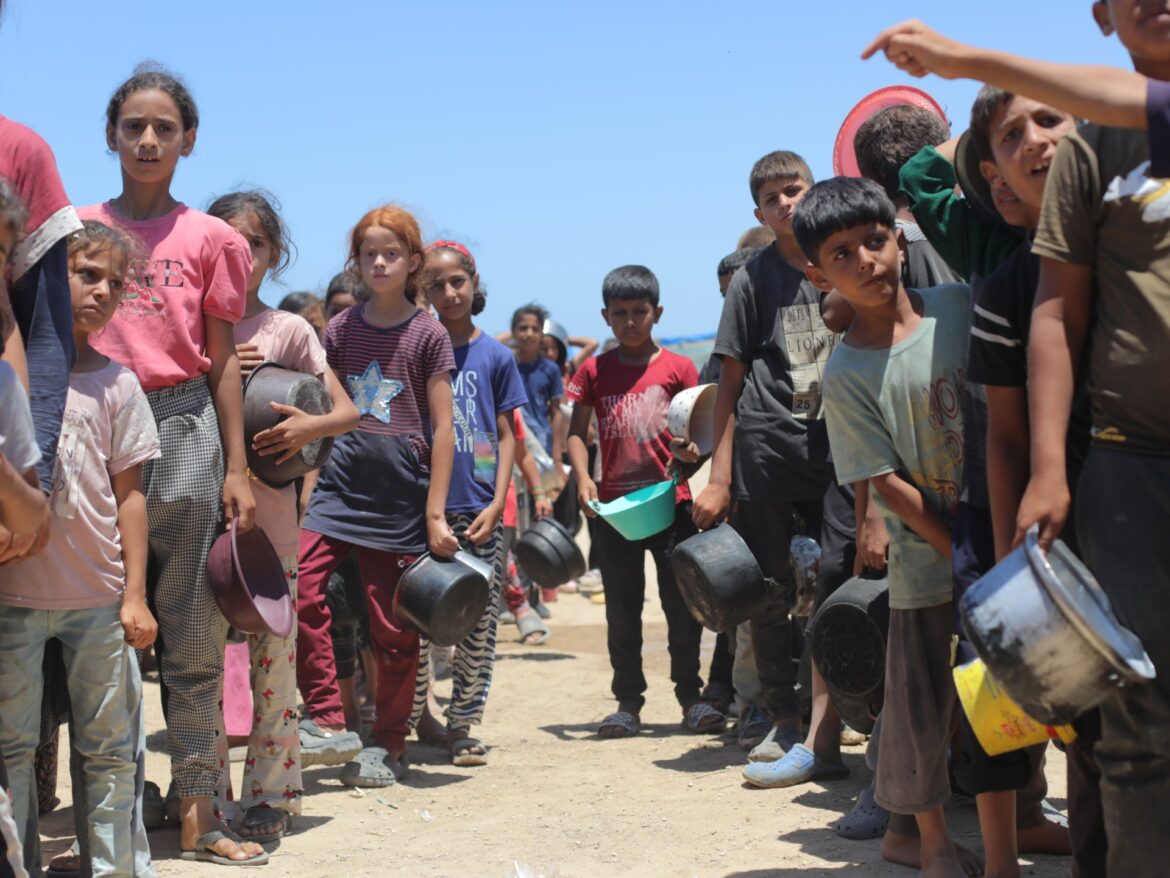11/6/2024–|Last updated: 11/6/202412:46 AM (Mecca time)
The announcement by the World Food Program of suspending the distribution of aid via the American floating dock in Gaza yesterday, Monday, raised questions about the feasibility of the dock, especially with its disruption days after it began operating as a result of weather conditions, and it was reopened one day before the occupation launched the Nuseirat operation to recover 4 detainees, in addition to… News that the invading Israeli force used the American pier.
While the government media office in Gaza confirmed that the number of aid trucks that passed through the pier did not exceed 120 trucks and that there was no meaningful contribution to it in light of the humanitarian catastrophe that the Strip is experiencing, the Food Program also stressed that it was able to provide limited food meals last month in the northern Gaza Strip with aid. Which entered via the sidewalk.
The program called for the opening of the Rafah and Kerem Shalom crossings for aid to enter, considering that the crossings are the best way for aid to enter the sector, which is facing famine-like conditions.
Amount of aid
During last May, during which the dock operated for about 10 days before it broke down, the US Central Command (CENTCOM) said that it had transported 1,005 metric tons of aid to the Gaza shore, of which 903 arrived at United Nations warehouses throughout the Strip.
Once the shipments are unloaded, the World Food Program is responsible for sending the aid to its warehouses, where the aid is then placed at the disposal of UN agencies or non-governmental organizations for distribution.
However, the program confirmed that it was forced to reduce the food rations it distributed to about one million people in Gaza last May as a result of the restrictions imposed by the occupation on land crossings and dwindling food stocks.
He pointed out that the aid he distributed last month included only canned food, prepared meals, and biscuits, and he was not able to distribute food supplies that would allow residents to prepare their meals.
The World Food Program confirmed that the famine conditions experienced by the residents of the Gaza Strip – especially in the north during the last six months – require the entry of a larger quantity of aid with high nutritional value, which can only be absorbed through land crossings, which are the primary means of entry for aid.
Two days ago, Centcom announced the return of the work of the pier and the delivery of about 492 metric tons of humanitarian aid, noting that “no American military personnel have set foot on the Gaza shore.”
Construction cost
Regarding the cost of constructing the American pier, the US Department of Defense (the Pentagon) reported last April that building the pier cost the United States about $320 million, then it was likely that the cost of actually operating the pier would grow in the coming months.
With the pier breaking down after days of use, the Washington Post estimated the cost of necessary repairs at about $22 million, with the possibility of rising to $28 million.
Washington has stated that the establishment of the floating dock is necessary “to alleviate human suffering in the Gaza Strip,” and for it to be used by international and relief institutions to secure food for the residents of the Strip.
Security warnings
With the arrival of the first aid shipment via the floating dock on May 17, the Islamic Resistance Movement (Hamas) confirmed its rejection of any military presence of any force on the Palestinian territories, amid warnings against Israel using the dock for military purposes.
After the occupation operation in Nuseirat camp last Saturday, Palestinian sources reported that the special force used the sea pier to storm the camp, confirming that the occupation forces headed there by sea, and also infiltrated using an aid truck.
For her part, the United Nations Rapporteur in the occupied Palestinian territories, Francesca Albanese, confirmed that Israeli and foreign soldiers hid inside an aid truck to enter Nuseirat, amid accusations that the temporary American pier designated for delivering aid was also used.
Washington denied this, saying that the Israeli army used an area “close to the sidewalk” to storm the camp.
The government media office in Gaza considered that “the floating dock is a humanitarian lie through which the American administration sold the illusion to world public opinion, and used it as a cover to beautify its biased position and partner with the occupation,” noting that if Washington wanted to alleviate the humanitarian tragedy in Gaza, it would have pressured the occupation to open the land crossings and facilitate entry. Aid.
The number of martyrs from hunger in the Gaza Strip has reached about 32 martyrs since the start of the aggression on October 7, most of them children, amid the spread of malnutrition and diseases, as well as the inability to treat the injured as a result of preventing the entry of medical aid.



